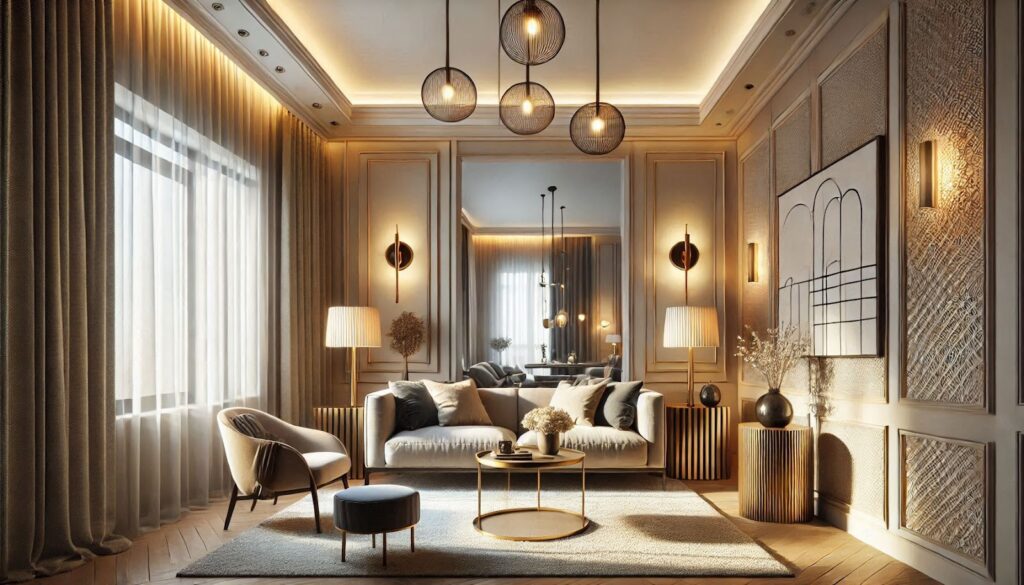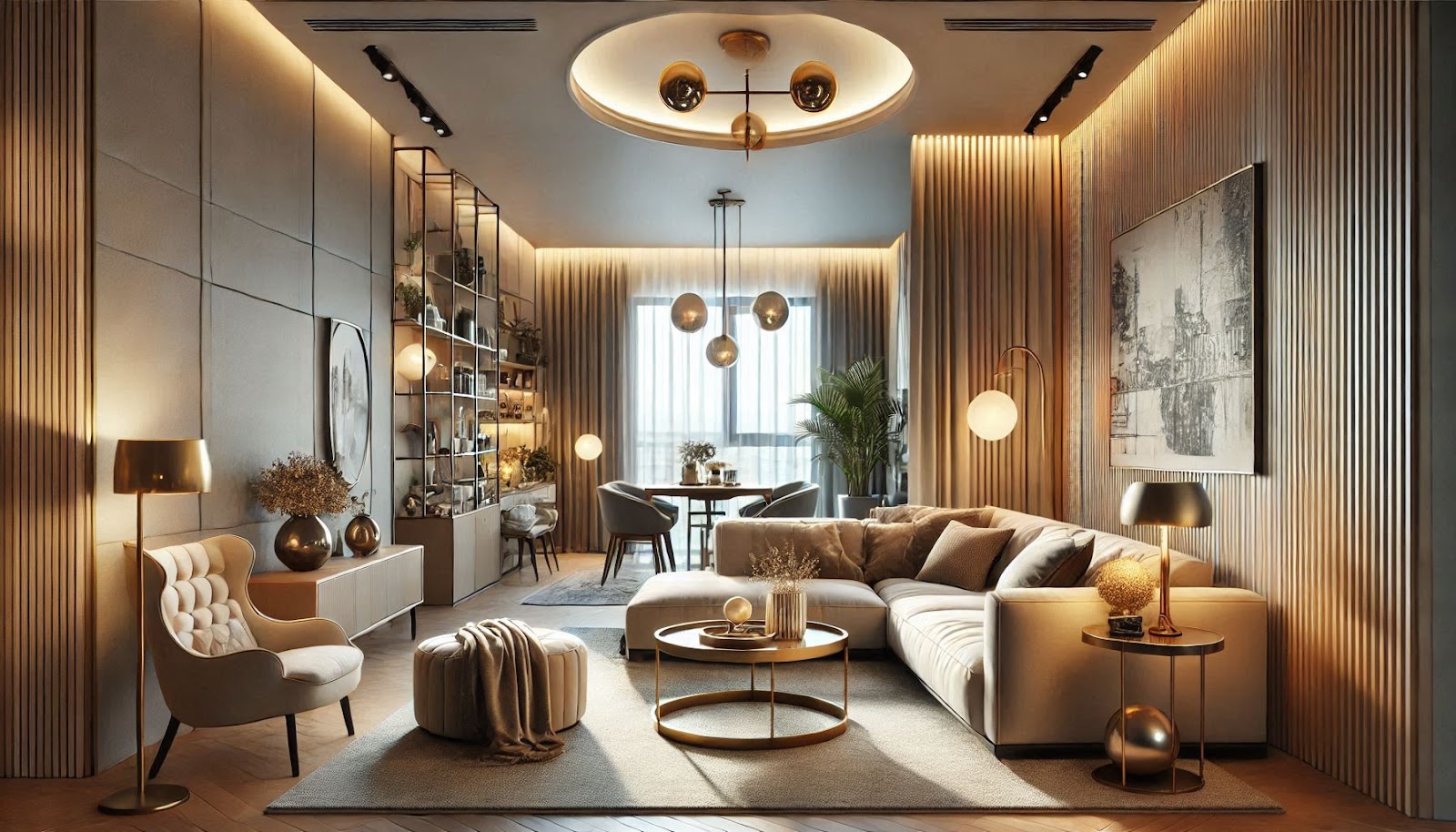In the heart of the United Arab Emirates, where tradition meets innovation, designing a house in Ajman has evolved into an art form that pushes the boundaries of conventional architecture. The emirate’s unique blend of cultural heritage and technological advancement creates an exceptional canvas for homeowners seeking to craft their perfect dwelling. As the Persian Gulf’s warm breeze sweeps through the city’s modern neighborhoods, innovative architectural solutions emerge, transforming residential spaces into masterpieces of comfort and sophistication.
Dancing with Light: Revolutionary Illumination Concepts for Arabian Homes
The interplay of natural and artificial light in Ajman’s residential architecture has undergone a remarkable transformation in recent years. Contemporary lighting designers are moving beyond traditional Arabian patterns to create dynamic environments that respond to the region’s intense sunlight while maintaining energy efficiency. Advanced daylight harvesting systems, utilizing photo-sensitive sensors, automatically adjust artificial lighting levels based on the abundant natural light that floods through strategically placed windows.
The implementation of circadian rhythm lighting systems has become a cornerstone of modern home design in Ajman. These sophisticated setups mirror the natural progression of daylight, with color temperatures shifting from energizing cool whites in the morning to calming warm tones in the evening. Studies conducted by local architectural firms reveal that homes equipped with these systems report a 32% improvement in occupant well-being and a 28% reduction in energy consumption.
Architectural lighting in Ajman’s residential sector now incorporates traditional mashrabiya patterns with a technological twist. LED-embedded geometric screens create ever-changing light displays while paying homage to Islamic architectural heritage. These innovative solutions not only provide practical illumination but also cast intricate shadows that transform throughout the day, creating living art installations within the home.
The integration of smart lighting control systems has revolutionized how homeowners interact with their environment. Voice-activated commands, gesture controls, and automated scenes based on occupancy patterns have become standard features in high-end Ajman residences. These systems can manage up to 500 individual lighting points within a single property, offering unprecedented control over the home’s ambiance.
Weaving Technology into the Fabric of Living Spaces
The modern Ajman home has become a testament to the seamless integration of smart technology with daily life. Unlike the obvious tech installations of the past, today’s solutions disappear into the architecture itself. Wireless charging surfaces are embedded within counter tops, while environmental controls are integrated into decorative wall panels that maintain the aesthetic integrity of traditional Arabian design.
Advanced home automation systems in Ajman now utilize artificial intelligence to learn and adapt to residents’ preferences. These systems process over 10,000 data points daily, from temperature variations to movement patterns, creating perfectly tailored environments. The integration extends beyond basic functionality, with AI-driven systems capable of predicting maintenance needs and optimizing energy consumption based on historical usage patterns.
Smart home security in Ajman has evolved to incorporate biometric recognition systems that blend seamlessly with traditional architectural elements. Fingerprint scanners disguised as decorative door handles and facial recognition cameras integrated into traditional lantern designs provide robust security without compromising aesthetic appeal. These systems boast a 99.9% accuracy rate while maintaining cultural sensitivity and privacy concerns.
The implementation of smart water management systems has become crucial in Ajman’s residential architecture. Advanced leak detection systems, coupled with smart irrigation controls, can reduce water consumption by up to 45% compared to traditional systems. These solutions integrate with weather forecasting data to optimize outdoor water usage while maintaining the lush gardens that characterize luxury homes in the region.

Orchestrating Interior Harmony: Where Heritage Meets Contemporary Design
The interior design landscape in Ajman has witnessed a revolutionary approach to space utilization. Modern homes are now embracing fluid layouts that can transform based on daily needs while incorporating traditional Arabic architectural elements. Movable walls equipped with smart motors can reconfigure spaces within minutes, offering up to 40% more usable area compared to conventional fixed layouts.
Material selection in contemporary Ajman homes reflects a sophisticated blend of local heritage and global innovation. Advanced composites that mimic traditional materials while offering superior durability have gained prominence. These materials can withstand the region’s harsh climate while reducing maintenance costs by up to 60% over their traditional counterparts. Natural stone features are enhanced with nano-coatings that provide protection against humidity and salt air, extending their lifespan by decades.
Color psychology plays a crucial role in modern Ajman interior design, with palettes carefully selected to promote well-being while honoring cultural preferences. Research conducted by local design firms indicates that homes incorporating traditional Arabic color schemes with contemporary applications report higher occupant satisfaction rates. The integration of chromotherapy in private spaces has shown remarkable results in stress reduction and improved sleep quality.
Acoustic design has emerged as a critical consideration in Ajman’s residential architecture. Advanced sound-absorbing materials, disguised as traditional decorative elements, can reduce ambient noise by up to 85%. These solutions are particularly valuable in creating tranquil environments within homes located in bustling urban areas.
Sustainable Innovation: Engineering Tomorrow’s Desert Dwelling
Sustainability in Ajman’s residential architecture has transcended basic energy efficiency measures. Advanced building envelope systems, incorporating phase-change materials, can reduce cooling loads by up to 35%. These innovative solutions work in harmony with the desert climate, storing excess heat during the day and releasing it during cooler nights.
Water recycling systems have become increasingly sophisticated in Ajman homes. Greywater treatment facilities, disguised within decorative garden features, can process up to 1,000 liters daily for landscape irrigation and non-potable uses. These systems incorporate advanced filtration technologies that ensure water quality meets international standards while maintaining the aesthetic appeal of luxury residences.
The integration of renewable energy solutions has evolved beyond simple solar panel installations. Building-integrated photovoltaics (BIPV) are now seamlessly incorporated into traditional architectural elements, generating power while preserving the visual integrity of Arabian design. Advanced energy storage solutions, utilizing the latest battery technology, can store up to 50kWh of energy, ensuring continuous power supply during peak demand periods.
Passive cooling strategies have been reimagined for contemporary Ajman homes. Modern wind towers, inspired by traditional badgirs, incorporate smart vents and temperature sensors to optimize natural ventilation. These systems can reduce air conditioning requirements by up to 40% during shoulder seasons while maintaining indoor comfort levels.
Crafting Personal Sanctuaries: The Art of Private Spaces
The concept of personal space in Ajman homes has evolved to meet contemporary lifestyle needs while respecting traditional values. Master suites now incorporate wellness zones that blend spa-like amenities with smart technology. These spaces utilize advanced air purification systems that can remove up to 99.97% of airborne particles, creating healthy micro-environments within the home.
Walk-in closets have been transformed into smart wardrobes with inventory management systems and clothing care solutions. RFID-tagged items are automatically tracked, while integrated steam cleaning systems maintain garments in perfect condition. Climate-controlled storage areas protect valuable pieces from humidity damage, extending their lifespan significantly.
Private bathrooms in luxury Ajman homes now feature advanced water conservation technologies alongside spa-inspired amenities. Smart fixtures can reduce water consumption by up to 65% while maintaining performance, and chromotherapy-enabled shower systems offer personalized wellness experiences. Voice-activated controls manage everything from water temperature to ambient lighting, creating truly hands-free environments.
The integration of home offices has become increasingly sophisticated, with spaces designed to optimize productivity while maintaining privacy. Sound-isolated pods featuring advanced connectivity solutions and automated environmental controls ensure perfect working conditions. These spaces incorporate circadian lighting systems and air quality monitors to support extended periods of focused work.
Nurturing Connections: Social Spaces Redefined
Contemporary Ajman homes are redefining social spaces to accommodate both traditional gatherings and modern entertainment needs. Majlis areas now feature subtle technology integration, with hidden displays and immersive audio systems that activate on demand. These spaces can transition from traditional sitting areas to advanced entertainment zones within moments, supporting both cultural practices and contemporary lifestyle needs.
Outdoor living spaces have evolved to combat the harsh climate while extending usability throughout the year. Advanced misting systems, integrated with weather monitoring stations, can reduce ambient temperatures by up to 12°C during peak summer months. Smart shading solutions automatically adjust based on sun position and wind conditions, creating comfortable outdoor environments year-round.
Kitchen designs in modern Ajman homes blend professional functionality with social interaction. Smart appliances with remote monitoring capabilities allow hosts to maintain perfect control over meal preparation while engaging with guests. Advanced ventilation systems, capable of exchanging the entire volume of air within minutes, ensure comfort during elaborate cooking sessions.
The integration of entertainment systems has reached new levels of sophistication. Multi-room audio setups with beam-forming technology can create precise listening zones, allowing different activities to occur simultaneously without interference. Advanced home theater systems featuring 8K projection and object-based audio create immersive experiences while maintaining the aesthetic integrity of traditional Arabic design.





